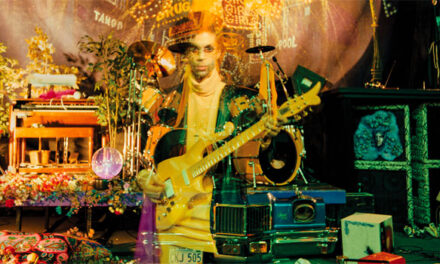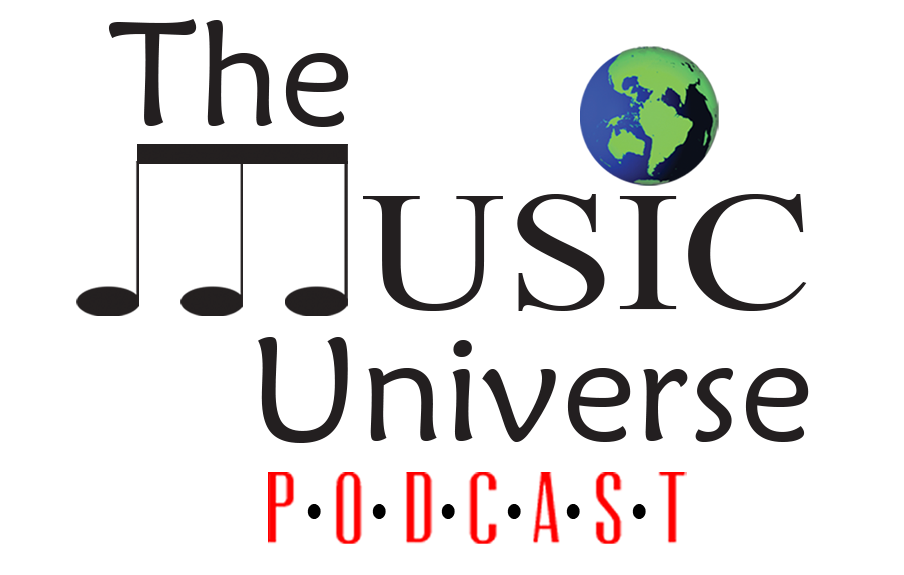Recordings by Janet Jackson, Labelle, Nas, Marlo Thomas, Louis Armstrong, Ira Glass and Kermit the Frog among 25 selected for preservation by Library of Congress
Librarian of Congress Carla Hayden has named 25 recordings as audio treasures worthy of preservation for all time based on their cultural, historical or aesthetic importance in the nation’s recorded sound heritage. Janet Jackson’s clarion call for action and healing in Rhythm Nation 1814 now joins other groundbreaking sounds of history and culture among the latest titles inducted into the National Recording Registry of the Library of Congress, including Louis Armstrong’s “When the Saints Go Marching In,” Labelle’s “Lady Marmalade,” Nas’ “Illmatic,” Kool & the Gang’s “Celebration,” and Kermit the Frog’s “The Rainbow Connection.”
“The National Recording Registry will preserve our history through these vibrant recordings of music and voices that have reflected our humanity and shaped our culture from the past 143 years,” Hayden shares. “We received about 900 public nominations this year for recordings to add to the registry, and we welcome the public’s input as the Library of Congress and its partners preserve the diverse sounds of history and culture.”
The recordings most recently selected for the National Recording Registry bring the number of titles on the registry to 575, representing a small portion of the national library’s vast recorded sound collection of nearly three million items.
The latest selections named to the registry, spanning from 1878 to 2008, range from pop, hip hop and country to Latin, Hawaiian, jazz, blues, gospel, classical and children’s music. In addition to the musical selections, the new class showcases one of the earliest recordings of an American voice by Thomas Edison, as well as sports history, voices of world leaders during World War II, a soap opera’s roots in radio, and even the first podcast to join the registry, with “This American Life” following its success in radio.
Released in 1989, Janet Jackson’s Rhythm Nation 1814 was written and recorded in the Minneapolis studios of James “Jimmy Jam” Harris III and Terry Lewis, the songwriters who had come of musical age with neighborhood friends Prince and Morris Day. They also had produced Jackson’s breakthrough album Control in 1986.
While Control was about Jackson finding her voice, the pair said, Rhythm Nation was a statement album about the pop icon finding her purpose. It turned out to be a spiritual follow-up to Marvin Gaye’s iconic “What’s Going On” a generation earlier. Working with Jackson, Harris and Lewis crafted songs protesting racism, police brutality and social injustice of the day. The “1814” of the title was a call back to the composition of “The Star-Spangled Banner,” with this being a new anthem for a new nation — one built on a multiracial, multiethnic vision and a thick dance groove.
“We wanted Rhythm Nation to really communicate empowerment,” Harris states. “It was making an observation, but it was also a call to action. Janet’s purpose was to lead people and do it through music, which I think is the ultimate uniter of people.”
In songs like the title track, “State of the World” and “The Knowledge,” they expanded on Gaye’s soulful lamentation of a world gone wrong. Then the album moves into love songs and dance music, with the hits “Miss You Much,” “Love Will Never Do” and “Escapade.” The album would produce four No. 1 hit singles and a record-breaking seven top five singles. It’s filled with lyrics just as timely in 2021 — and the album received among the most votes in the public nomination process last year for the recording registry.
“Where we’re at in society today, the lyrics of ‘Rhythm Nation’ and ‘State of the World’ — some of those resonate just as powerfully, if not more so, as a narrative of what’s happening in society,” Harris adds. “There’s no expiration date on great music.”
American roots music also joins the registry with the album “Partners” by Flaco Jiménez, a champion of traditional conjunto music and Tex-Mex culture who also is known for innovation and collaboration with a variety of artists. This bilingual album features collaborations with Linda Ronstadt, Ry Cooder, Emmylou Harris and Los Lobos, among others.
Connie Smith’s “Once A Day”, Labelle’s “Lady Marmalade,” Jackson Browne’s Late For The Sky, Kool & The Gang’s “Celebration” and Nas’ Illmatic also join the preservation.
Connie Smith has been called one of the most underrated vocalists in country music history. And she’s greatly admired by her peers; Dolly Parton once said, “There’s only three real female singers: Barbra Streisand, Linda Ronstadt and Connie Smith. The rest of us are only pretending.” Smith’s rise to that level of admiration began with her very first single, “Once a Day,” written by Bill Anderson who was already successful, both as a singer and a songwriter, when he heard Smith at a talent contest. He helped her get a recording contract and, for her first session, wrote “Once a Day,” an achingly sad song about a jilted woman who misses her lover only “once a day, every day, all day long.” Recorded at RCA’s famous Studio B in Nashville, Smith was backed by session musicians and members of Anderson’s band, The Po’ Boys, including one new player, steel guitarist Weldon Myrick, who would go on to become a Nashville legend himself. Producer Bob Ferguson wanted the steel guitar to be right up front and Myrick delivered, so much so that Smith credits Myrick with “creating the Connie Smith sound.” “Once a Day” was Connie Smith’s biggest hit and became her signature song.
The elemental trio of Labelle — Patti LaBelle, Nona Hendryx and Sarah Dash — first formed in 1962 as Patti LaBelle and the Bluebelles. By the early 1970s, they were simply Labelle, and released six albums under that name. Their biggest hit was the French-infused “Lady Marmalade” dance track written by Bob Crewe and Kenny Nolan and produced by Allen Toussaint and Vicki Wickham. Inspired by a few choice streets in New Orleans, the song has been covered several times since its release, still unwittingly prompting listeners to sing its famous refrain phonetically: “Voulez-vous coucher avec moi (ce soir)?,” often unaware of its true meaning.
Although Jackson Browne had some success with his first two albums (in ’72 and ’73), in 1974, he was still primarily known as a songwriter, his works having been recorded by Linda Ronstadt, Tom Rush and the Eagles, among others. Late for the Sky changed all that. It was recorded more quickly and for less money than his previous album, and neither of the album’s released singles charted. But none of that mattered. The maturity and depth of Browne’s writing did. Brilliantly supported by his touring band, especially David Lindley on guitar and fiddle, the lyrics deal with apocalypse, uncertainty, death, and especially, love and the loss of it experienced by someone transitioning to manhood. In “Fountain of Sorrow,” Browne wrote, “I’m just one or two years and a couple of changes behind you/In my lessons at love’s pain and heartache school ….” Bruce Springsteen called Late for The Sky Browne’s “masterpiece.”
Founded in 1964 by brothers Robert “Kool” Bell and Ronald Bell, Kool and the Gang (formerly the Jazziacs or the Soul Town Band early on) had already had hits with their songs “Ladies Night” and “Jungle Boogie,” when they released their 1980 album Celebrate! containing the group’s most famous and enduring song, “Celebration.” Led by J.T. Taylor’s spirited lead vocal, it would be their biggest hit and quickly became a feature of national celebrations like the 1980 World Series, the 1981 Super Bowl and the 1981 NBA Finals. While others have released covers to great success, such as Kylie Minogue in 1992, the original remains a staple of every party DJ’s set list — be it at a high school dance or a 50th anniversary party.
Nasir bin Olu Dara Jones — “Nas” — released his groundbreaking studio debut Illmatic in 1994. Critics quickly extoled it for its rhythmic originality and its realistic yet fresh take on life in the Queensbridge projects. Characterized by the masterful use of multi-syllabic and internal rhyme, surprising line breaks and rhythmic complexity, the album’s technique has been widely copied and proven broadly influential. The album featured (along with Nas’ father Olu Dara) the sample-soaked production of a set of deeply talented and experienced producers including Q-Tip, Large Professor, Pete Rock, L.E.S. and DJ Premier. The sound they forged features gritty drums, hazy vinyl samples and snatches of jazz and ‘70s R&B. It has been described as the sound of a kid in Queensbridge ransacking his parents’ record collection. While the album pulls no punches about the danger, struggle and grit of Queensbridge, Nas recalls it as a musically rich environment that produced many significant rappers, and that he “felt proud being from Queensbridge…. [W]e were dressed fly in Ballys and the whole building was like a family.”
Under the terms of the National Recording Preservation Act of 2000, the Librarian of Congress, with advice from the National Recording Preservation Board, selects 25 titles each year that are “culturally, historically, or aesthetically significant” and are at least 10 years old. Some registry titles have already been preserved by the copyright holders, artists or other archives. In cases where a selected title has not already been preserved, the Library of Congress Packard Campus for Audio Visual Conservation works to ensure that the recording will be preserved by some entity and available for future generations. This can be either through the Library’s recorded-sound preservation program or through collaborative ventures with other archives, studios and independent producers.
The Packard Campus is a state-of-the-art facility where the nation’s library acquires, preserves and provides access to the world’s largest and most comprehensive collection of films, television programs, radio broadcasts and sound recordings. It is home to more than seven million collection items. The Library of Congress is the world’s largest library, offering access to the creative record of the United States — and extensive materials from around the world — both on-site and online. It is the main research arm of the U.S. Congress and the home of the U.S. Copyright Office.
NEWS: @LibnOfCongress Carla Hayden today named 25 recordings as audio treasures worthy of preservation based on their cultural, historical or aesthetic importance in the nation's sound heritage. View the 2020 selections to the #NatRecRegistry: https://t.co/4KFYwoRxh8 pic.twitter.com/jvdg9nNahz
— Library of Congress (@librarycongress) March 24, 2021




